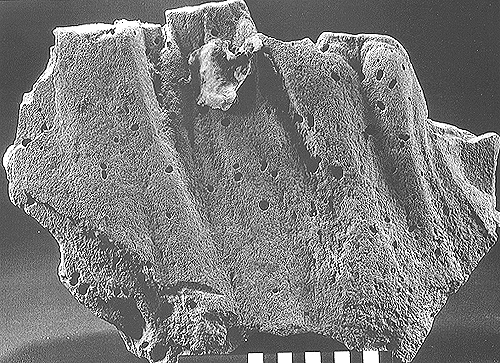
Erosional structures: sole marks
Plate 81

Erosional structures: sole marks
Plate 81
I introduce here a group of structures that display a great variety of forms, often elegant and highly ornamental, at a small to intermediate scale. They develop on depositional surfaces and are thus preserved on bedding planes, especially at the base of sandstone beds: that is why these structures are called sole marks, or sole markings. More often, what is preserved is their mold; consequently, they are labeled as casts (see Introduction, figure 5).
Erosion plays a major role in producing sole marks; it can act in more than one way, which results in the morphologic variability we observe. Part of this variability has to do with the physical state and lithology of the substrate. Many structures are carved in mud by catastrophic processes invading a tranquil bottom. They are immediately molded by sand, subsequently cemented by diagenesis into a sandstone; this is the case for the example illustrated in plate 81. Other marks are left on a sand bed (see following plates); chances of observing them in Ancient sediments are slight because they are more commonly canceled or covered by other sand (the contact is welded and beds do not part along it). Only a mud cover allows them to be exhumed and observed.
The slab seen in plate 81 comes from the base of a sandstone bed belonging to Pleistocene shallow-water "yellow sands" in the Apennine foothills near Bologna. What you see are casts of the original bottom topography (as if you were looking at the depositional interface from below). A scour was made around and behind an oyster valve, fixed to the bottom, by a current flowing from top to bottom of the image. This is called an obstacle scour or a crescent mark, depending on whether emphasis is on its cause or its shape. A modern counterpart is shown in plate 82.
| Photo: P. Ferrieri 1992. |